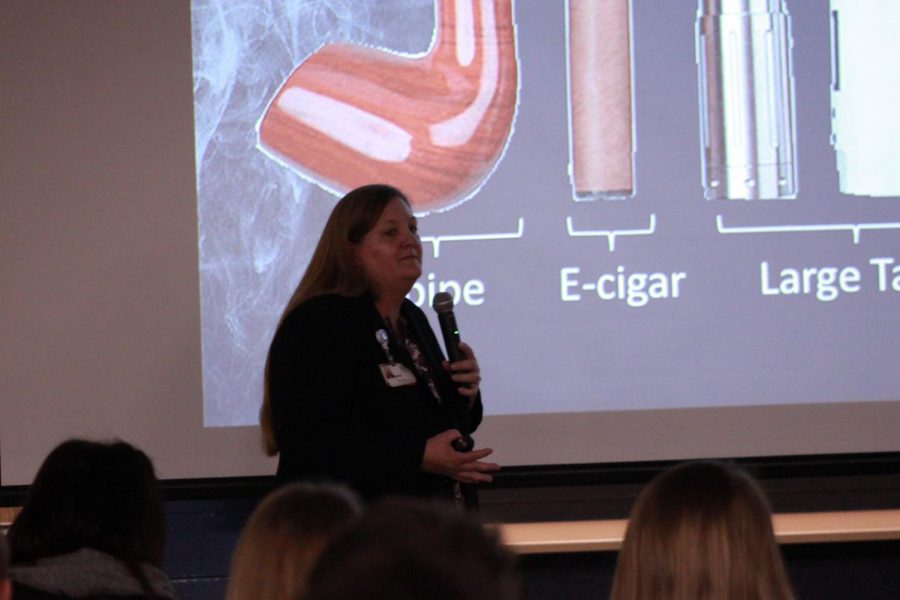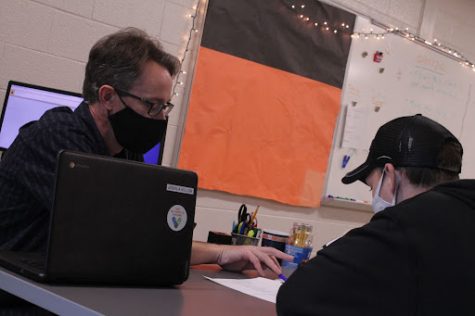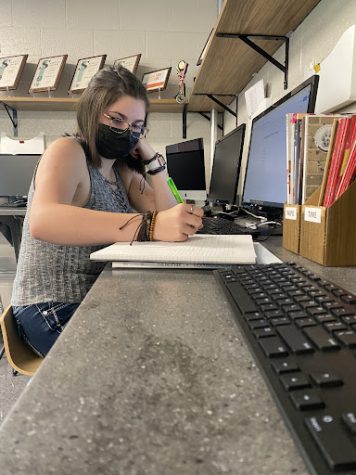Deteriorating health caused by vaping
So vaping is cool, right? How’s buying second-hand vapes to find out that you were vaping urine? Or getting caught with a vape you bought that tested positive for THC (aka marijuana) and getting expelled for vaping, not to mention getting charged for having drugs underage.
In late November there was a presentation given by Cheryl Phillips, a coordinator at St. Joseph Mercy Health Exploration Station, when she talked about exploding vapes and other hazards.
Not knowing what marijuana could do to someone, could harm them. So just don’t do it.
The Juul labs released a statement to the New York Times on November 13 that stated, “We are going to suspend retail sale in stores and discontinue the promotion of Juul on social media. These flavored JUUL pods will be sold only through a restricted system that limits sales to consumers who are at least 21 years old and imposes bulk-purchasing restrictions.”
The company hopes that youth will be more restrained from buying Juul. Go to the Juul website and a message will pop up asking if you are 21+. And, if someone lies, they could probably get into serious trouble. Vaping leads to health problems later in life for children and teens. It is time to quit.
Vaping is worse than cigarettes
An often cited agreement in favor of vaping is that it helps to quit smoking and is a healthier option. This is a gross error. According to a study by Public Health Online, an independent online resource for public health students, “4.3 percent of middle school students use an e-cigarette vape,” and “11.3 percent of high schoolers use e-cigarette vapes.” The Maurer Foundation, mainly a breast research organization, thinks there is no research on what is in a vape. “The only thing we do know about e-cigarette vape is that it has propylene glycol in it.” No one under 18 should be smoking anything.
Pros of quitting
When smokers stop their health will increase substantially. In the same study, Public Health Online found that within 20 minutes of quitting your heart rate and blood pressure begin to drop to healthier levels. Within twelve hours of quitting, carbon monoxide levels come down to healthier rates. Why wouldn’t they want their health to get better?
One to nine months after quitting, coughing and breathing problems go away as the lungs repair the damage from smoking. One year after quitting, a sense of taste and smell are finally back to normal. Two to 5 years after, an increased risk of stroke goes back to the level of a non-smoker. After 10 years of quitting, the increased risk of developing cancer is back to the level of a non-smoker, which goes to show that quitting can increase health, back to healthy levels.
Cons of vaping
Vaping can slow the brain’s development. A study done on pregnant mice with nicotine showed, “Male mice exposed to nicotine-laced vapors showed no gene activity changes. Among females, however, vapors laced with nicotine altered the activity levels of 148 genes in the brain’s frontal cortex,” according to Science News for Students. People lose about 150 genes in their frontal cortex out of about 16 billion. That may not sound like a lot, but it could have a big impact on someone’s behavior. Vaping takes away a lot of your brain cells. Why would anyone want to hurt themselves like that?
According to a poll done by Truth Initiative, about 12 percent of high schoolers in the U.S. vape, which is high for youth. Diacetyl is what causes popcorn lung and researchers at Harvard University found that “39 of 51 e-cigarette brands contained diacetyl. The study also found two similarly harmful chemicals—2,3 pentanedione and acetoin—present in 23 and 46 of the 51 flavors it tested. Roughly 92 percent of the e-cigarettes had one of the three chemicals present.” The companies are putting poisonous liquid in vapes that can cause health problems and potentially a shorter lifespan, yet teens can’t get enough.
School and vaping
A letter released in early November to the parents of Stockbridge Jr./Sr. High, from the offices of principals Jeff Trapp and Meghan Kunzelman explained what vaping was and included links to resources to learn more.
It also showed pictures of different types of vaping devices. Everyone at this school has been told by the principals, through statistics, and through presentations. Why is it still happening at our school?










